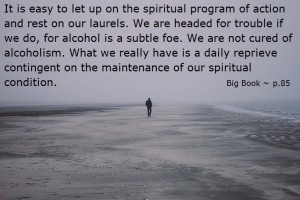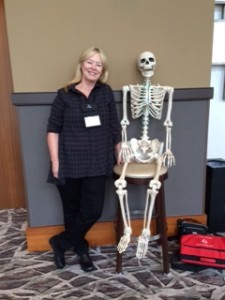Lea Wait's Blog, page 278
October 20, 2015
An Unexpected Surprise
 Vaughn Hardacker here: The one of the negatives of living up here in the COUNTY is the lack of bookstores. It has been a couple of years since Mr. Paperback closed both of its county stores, leaving us with Walmart (a limited selection at best), several supermarket displays (even more limited), and several small used bookstores. Being a book-junkie I’m always prowling, looking for a good read.
Vaughn Hardacker here: The one of the negatives of living up here in the COUNTY is the lack of bookstores. It has been a couple of years since Mr. Paperback closed both of its county stores, leaving us with Walmart (a limited selection at best), several supermarket displays (even more limited), and several small used bookstores. Being a book-junkie I’m always prowling, looking for a good read.
I was visiting the Caribou Dollar Tree when I noticed that they have a small display of books, hardcover and paperback, and they are all priced $1.00 (Granted some of the offerings aren’t worth much more). I saw THE TRUTH ABOUT THE HARRY QUEBERT AFFAIR by Joel Dicker (an author whom I heretofore had no knowledge) and figured for a buck, why not? I read the fly and learned that the book was a thriller with an author as its protagonist, which immediately caught my interest. The plot line is simple. Marcus Goldman, a young writer, published his first book which became a phenomenal best seller. Obviously, his publisher is anxiously awaiting his next book. So, you might ask what’s the problem? Marcus has a terrible case of writer’s block–or so he thinks. In reality he is scared to death that after his successful first novel his second will be nowhere close to being as good or successful. His solution is to leave New York City and spend some time with his old professor and mentor, Harry Quebert (pronounced Quee-bear) in a small New Hampshire coastal town. While visiting the body of a fifteen year old girl, who has been missing for thirty-three years, is discovered on Harry’s property. Harry is arrested and charged with her murder. The protagonist decides that the best way to save his mentor is to do his own investigation and write a book that will exonerate Harry. What follows is a page turning novel with more twists than a pretzel.
So, I imagine that at this time you’re asking what’s so unusual about this book? Not only is the book an international best-selling thriller, but the author (Joel Dicker, a young Swiss writer) includes a number of lagniappes, written as writing lessons that Harry gave to Marcus Goldman, that are a writing course in itself. When was the last time you read a book that was not only attention holding, but educational at the same time? And I got it for a buck!
A final note: A friend of mine returned from a trip to Scotland and England and handed me a book that he bought in Heathrow Airport. “You got to read this,” he said, “It’s terrific.” The price on the book was £6.99 or $10.82. I turned to my bookcase and handed him a copy of the very same book: THE TRUTH ABOUT THE HARRY QUEBERT AFFAIR. I said, “Caribou Dollar Tree, for a dollar.”
My assessment of the book: Well above average. As a youth, the author, although a Swiss national, spent his summers in Stonington and Bar Harbor, Maine. His geography of the New Hampshire coast is pure fiction, but it seems to work. The book was originally published in France and was translated by Sam Taylor. The irony of the situation is this: Like his protagonist, Marcus Goldman, what will Joel Dicker do to follow up?
October 19, 2015
Where Do You Get Your Ideas?
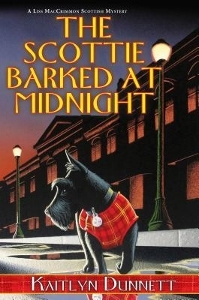 Kaitlyn Dunnett/Kathy Lynn Emerson here. Writers are often asked where their ideas come from. In this case, I actually know.
Kaitlyn Dunnett/Kathy Lynn Emerson here. Writers are often asked where their ideas come from. In this case, I actually know.
The starting point for The Scottie Barked at Midnight was the suggestion by a reader that I introduce a Scottish terrier to the Liss MacCrimmon Mysteries. I thought that was a great idea, but figuring out how to do it was a bit tricky. Liss, my amateur detective, already had two cats, and at least one of them didn’t have the kind of personality that would adapt well to sharing the house with a dog. Liss’s husband’s brother already had a dog, a mutt named Papelbon. A fox terrier named Skippy featured in an earlier book, but most of the continuing characters seemed to have no interest in owning pets of any kind.
At the same time, I’d been considering how I might combine my love of Dancing with the Stars with a story set in Moosetookalook, Maine. I’m a big fan of this series. I don’t know why. I dislike most competition shows on television. Ditto reality shows. And my dance background is in ballet and theater choreography, not ballroom. Liss, a professional Scottish dancer, had no experience in this area, either. Then I read Homicide Hustle by Ella Barrick, in which her ballroom-dance-teacher sleuth gets involved in a television competition show called Ballroom with the B-List. It’s a very funny book, as well as a clever mystery. Since the last thing the cozy world needs is more clones, I started looking for an idea that would use the elements I wanted from the dance competition and yet be unique to my series.
 That led me to invent Variety, Live!, a competition show that brings together old-time variety acts—jugglers, magicians, dancers, singers, ventriloquists . . . even a dog act. I had a wonderful time dreaming up characters to go with the talents and imagining a plot that would bring the two Scotties that are two-thirds of “Deidre’s Dancing Doggies” into the world of Liss MacCrimmon and her friends. Since this is a mystery, there had to be nefarious doings that led to murder. Nothing is as it seems, not even the “live” part of Variety, Live! And Liss, with her dance background, is in a position to step in when the dancing doggies, Dandy and Dondi, need a new partner.
That led me to invent Variety, Live!, a competition show that brings together old-time variety acts—jugglers, magicians, dancers, singers, ventriloquists . . . even a dog act. I had a wonderful time dreaming up characters to go with the talents and imagining a plot that would bring the two Scotties that are two-thirds of “Deidre’s Dancing Doggies” into the world of Liss MacCrimmon and her friends. Since this is a mystery, there had to be nefarious doings that led to murder. Nothing is as it seems, not even the “live” part of Variety, Live! And Liss, with her dance background, is in a position to step in when the dancing doggies, Dandy and Dondi, need a new partner.
The Scottie Barked at Midnight goes on sale in one week on October 27, 2015. For those of you in Maine, I’ll be in Waterville with Lea Wait on October 31 and November 1 at the REM Craft Fair, held at 30 Elm Plaza (Champion’s Fitness Center). Apparently writing books is now considered a craft, right along with woodworking, basket weaving, needlepointing, and all the rest. I’m not complaining, mind you, but who knew?
Kathy Lynn Emerson/Kaitlyn Dunnett is the author of over fifty books written under several names. She won the Agatha Award in 2008 for best mystery nonfiction for How to Write Killer Historical Mysteries and was an Agatha Award finalist in 2014 in the best mystery short story category for “The Blessing Witch.” Currently she writes the contemporary Liss MacCrimmon Mysteries (The Scottie Barked at Midnight) as Kaitlyn and the historical Mistress Jaffrey Mysteries as Kathy (Murder in the Merchant’s Hall). The latter series is a spin-off from her earlier “Face Down” series and is set in Elizabethan England. Her websites are www.KaitlynDunnett.com and www.KathyLynnEmerson.com
October 18, 2015
Unearthing Story While Cleaning My Desk
Kate Flora: This past week, I got stuck in the middle of a writing project. It happens. It

Draft application of Kate M. Burke, storekeeper in Bingham, Maine, to the DAR
wasn’t writer’s block, which you all know I don’t believe in. It was story block. Or organizational block. It’s nonfiction, and trying to figure out where the data goes, where the story goes, and how to connect the two can be a challenge. Frustrated, I decided that perhaps I could create greater clarity of mind if I cleared some of the external clutter, and I decided to clean my desk.
Crazy idea. I’ve been in book jail for so much of the past two years that there is a ton of filing waiting to be attended to. Since I live in book time, and book time means that a day or a week and a year are a lot alike, some of those piles have sat, untouched, for a long time, just waiting for me to get back to them. Well, I finally did get back, and the discoveries began.
There was that file—maybe you have one, too—where things I don’t want to throw away but have no particular place for come to rest. It was in that file that I started to make some fascinating discoveries.
First up? A mock property exam that my study group and I wrote during our first year of law school. Since 1974, this weary sheet of lined paper has traveled with me, with several sets of handwriting as questions were proposed. Reading it reminded me how I never would have made it through law school without this wonderful group of friends. It reminded me of two manuscripts I have buried in the drawer–my “practice mysteries” about a group of law students. Maybe someday I’ll unearth them.
Next? An obscure old brown envelope full of clippings. Inside? Tons of genealogical data from my great aunt Kate, after whom I was named, including drafts of her application to join the DAR, and all the data necessary to apply to the Mayflower Society. Fascinating stuff. I can’t help but wonder about Captain Josiah Parker who fought in the American Revolution. What was he like and where can I learn more?
 In the same folder is a Farberware ad that was in the New York Times in 1973. The caption? You keep a man the way you get a man: by having the best possible equipment and knowing how to use it. Along with that? A carbon copy of the letter I wrote to Farberware, expressing how offensive the ad was. In that letter, I vowed never to purchase another Farberware product until they apologized. Needless to say—I have never bought Farberware since. But I am amazed that they could be this offensive in 1973. How far, in some ways, we have come. And how important to remember that not so long ago, the employment ads in the papers were labeled: Help Wanted: Male and Help Wanted: Female.
In the same folder is a Farberware ad that was in the New York Times in 1973. The caption? You keep a man the way you get a man: by having the best possible equipment and knowing how to use it. Along with that? A carbon copy of the letter I wrote to Farberware, expressing how offensive the ad was. In that letter, I vowed never to purchase another Farberware product until they apologized. Needless to say—I have never bought Farberware since. But I am amazed that they could be this offensive in 1973. How far, in some ways, we have come. And how important to remember that not so long ago, the employment ads in the papers were labeled: Help Wanted: Male and Help Wanted: Female.
Then a piece of paper surfaced that reminded me how far I have come—two Peanuts 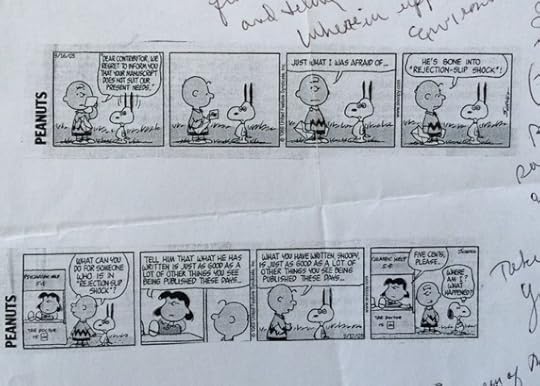 comics, clipped from the paper, and sent by the marvelous writer Marilis Hornidge, during my ten miserable years in the unpublished writer’s corner, about how to deal with rejections.
comics, clipped from the paper, and sent by the marvelous writer Marilis Hornidge, during my ten miserable years in the unpublished writer’s corner, about how to deal with rejections.
At the bottom of the pile, something that I have treasured since 1976. A short note from Donald M. Murray, who was a Boston Globe columnist I greatly admired but did not know. The kind of letter that can make a huge difference in a beginning writer’s life. He wrote:
Dear Kate Flora:
After I wrote this column, I was feeling glum one evening and grabbed one mystery off the shelf, started to read and couldn’t care less about the characters and their story, and tossed it; then I chose another and tossed it, then I started Chosen for Death and was lost to my world, caring about your characters and what happened to them.
I have ordered your “fun house mirror” book and will buy anything you write in soft or hardcover.
I read you for story and, as a writer who has published a couple of novels years ago and is working on one now, I read you for craft.
Thank you.
Don Murray
In case you’ve ever wondered whether it is worth it to send a note to a writer you admire? The answer is a resounding yes.
I also found an envelope with $460.00
All in all, I may be behind on my work, but I am very glad I cleaned my desk.
October 16, 2015
Weekend Update: October 17-18, 2015
 Next week at Maine Crime Writers there will be posts by Kate Flora (Monday), Kathy Lynn Emerson/Kaitlyn Dunnett (Tuesday), Vaughn Hardacker (Wednesday), Dorothy Cannell (Thursday) and Jen Blood (Friday).
Next week at Maine Crime Writers there will be posts by Kate Flora (Monday), Kathy Lynn Emerson/Kaitlyn Dunnett (Tuesday), Vaughn Hardacker (Wednesday), Dorothy Cannell (Thursday) and Jen Blood (Friday).
In the news department, here’s what’s happening with some of us who blog regularly at Maine Crime Writers:
From Kathy Lynn Emerson/Kaitlyn Dunnett: The three winners of advance reading copies of The Scottie Barked at Midnight (in stores in hardcover on October 27) are Lil Guckstern, Monica, and Karen Whalen. Congrats to all and a big thank you to everyone who shared dog and cat stories in their comments.
From Kate Flora: I was browsing and discovered that Death Dealer, my Agatha and Anthony-nominated true crime, is on sale at Amazon at an amazing price. (less than $4.00!) Who knows how long this will last, but if you’re looking for a gift for a true crime lover or a dog lover, you should grab this deal: http://www.amazon.com/Death-Dealer-Cadaver-Brought-Justice/dp/0882824767/ref=sr_1_1?ie=UTF8&qid=1444942864&sr=8-1&keywords=Death+Dealer+Kate+Flora
Is anyone out there planning to do NaNoWriMo? If so, let us know so we can all cheer you on.
And as you know, we love to do an annual Halloween feature, so stay tuned. This year, John Clark is compiling it, and collecting stories from Maine librarians. It’s bound to be fascinating!
Here’s a composite photo of Kate with her fellow Beat, Slay, Love authors. A formidable crew:
Katy Munger, Taffy Cannon, Gary Phillips, Kate Flora and Lise McClendon
An invitation to readers of this blog: Do you have news relating to Maine, Crime, or Writing? We’d love to hear from you. Just comment below to share.
And a reminder: If your library, school, or organization is looking for a speaker, we are often available to talk about the writing process, research, where we get our ideas, and other mysteries of the business. Contact Kate Flora: mailto: kateflora@gmail.com
10/16/1980
John Clark taking everyone back to October 16, 1980. I didn’t wake up that morning, I came to and finally realized that I couldn’t bullshit myself any longer. My life was a train wreck, when I looked at the future, all I saw was a thick, forbidding wall of fog that I knew hid nothing but horrible creatures and events. Beth was pregnant and looking extremely unhappy that day. Even though I wasn’t able to remember much about the night before, I couldn’t blame her. I didn’t know it yet, but she’d been driven temporarily insane by being married to an extremely unpredictable and unreliable man—Me.
My mother had been struggling with her own recovery from alcoholism for over two years at that point. When she finally listened to her counselor at Choice Skyward in Owls Head, who had been telling her that living with an active alcoholic (my father) and trying to get/stay sober, was pretty much impossible, she told Dad to leave and got a divorce.

My head and gut used to feel like this all the time
Even though I was really paranoid by that point (Mom later told me she’d thought I’d stopped drinking several years before), I realized that something miraculous was happening in her life. On the evening of 10/16/1980, it was my turn to suck it up and find the miracle. Just out of curiosity, I looked up events that happened on that day. Only two of note happened: “Brigadoon” opened at the Majestic Theater NYC for 133 performances and China performed a nuclear test at Lop Nor, PRC. I certainly felt like someone had detonated a weapon of mass destruction in my gut when I drove from Chelsea to the St. Paul’s Center in Augusta that evening where I knew from reading the local newspaper there was an AA meeting.
After walking into the building, I immediately went into ‘guy’ mode and did not ask the lady at the desk where the meeting was. Instead, I followed a crowd downstairs and took a seat in a long crowded room. The more I looked around, the bigger the knot in my stomach got. There was this little hunchback with an oxygen tank who kept giggling and laughing. Behind him sat three elderly women with enough bling and make-up to keep the entire Dallas Cowboy’s Cheering Squad happy and opposite them was this great big guy wearing a ton of turquoise whose face looked like someone had used it as an ATV race course. (All of them became my trusted AA friends not long after) In all it was a very scary crew and it didn’t take me long to realize that this sure wasn’t the AA meeting. Even so, I was desperate enough to sit and listen. By doing so, I discovered I’d ended up at the annual feedback meeting of the Kennebec-Somerset Council on Alcohol Prevention and Treatment. When it was over, I hurried out and went home.
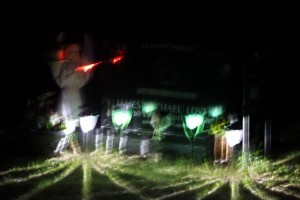
Happy that those creepy feelings are mostly in the past.
However, as I’ve heard time and time again at meetings, when you’re ready, nothing can stop you from going to meetings and if you’re not, then nothing anyone can say or do will keep you coming back. A week later, I hadn’t had anything to drink and I went back to St. Paul’s. This time, the first person I saw was a woman I knew well and trusted. She gave me a hug, told me she was glad to see me and ushered me into a beginner’s meeting in a small back room. I don’t remember what was said, but I do know who sat on either side of me and when it was time for the chip club, they told me to get up and go pick up a white chip. I did so, and the miracle began.
It continues to this day, 35 years later. Next Tuesday, I celebrate at the Canaan Bog Group, my new home group since the meeting here in Hartland folded. I did a bit of research in preparation for my celebration. More than 2,825,445,385 have been born since I got sober. In 2012, 3.3 million deaths were attributable to alcohol consumption on our planet and every day in America, another 28 people die as a result of drunk driving crashes. We’ve buried three family members, two of whom died in part because of this disease. Mom celebrated 28 years of sobriety and died sober. One reason her death hit me harder than any other was because we had the extra bond of recovery and I still miss being able to drop in at Sennebec Hill Farm and have a mini-meeting with her. During the time we were both going to meetings, we chaired each others’ anniversaries and one of the best things that happened to me occurred at her first one. It was in Belfast in March and she was so pumped that she forgot to tell me that I was going to be one of the three speakers. I was 5 months sober at the time and when they announced me as a speaker, I was scared witless. I looked around and there were a hundred people there including two of my high school teachers, the family plumber and his wife, Beth and my younger sister, Sara. I didn’t have time to do anything but be honest. When I spilled my guts and nobody got upset or disgusted, I realized that what I’d been hearing at meeting after meeting was true. People who were serious about sobriety, identify with what happened to you, they don’t compare.
Getting and staying sober isn’t easy and I sure as hell haven’t done everything right. I still have resentments and character defects, I can still feel sorry for myself and hate admitting when I’m wrong, but I consider myself really lucky because over the years, I’ve seen more people fail than succeed at getting and staying sober. Mystery writer Lawrence Block has some great recovery bits in his book Eight Million Ways To Die. His protagonist, Matt Scudder is struggling to get sober after a relapse and is at a meeting. One person starts speaking and says, “I came into this program to save my ass. Who knew my soul was attached to it.” A little bit later, an old woman speaks up while looking at Scudder. “Getting sober is easy. All you have to do is don’t drink, go to meetings and change your whole F&%$ing life.” Block and James Lee Burke write recovery better than anyone else I’ve read, for very good reasons.
Perhaps the greatest gift I’ve received is that neither of my daughters have ever seen me drunk…Crazy, for sure, but never under the influence. Now I have the best birthday present ever in Piper, my granddaughter and I hope years from now I can still say the same is true for her.
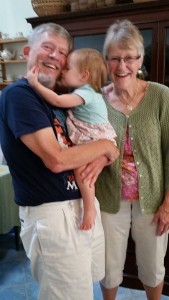
No comment needed
In the beginning, I heard much made about the word TIME. I was told among other things that it stood for This I Must Endure or This I Must Earn. Now it has different meanings including Today Is Much Easier and This I May Enjoy. Thirty-five years…Whoda thunk it?
If you know someone who is struggling with addiction, please share this with them. No one needs to suffer if they’re willing to change.
October 14, 2015
THE BIRDS – AN EERIE TALE
Susan Vaughan here with an eerie tale although early for Halloween. Decades ago (I won’t say how many), I was a graduate student at Rice University in Houston, Texas. A short walk from my apartment complex took me daily to the lovely campus with its unique architecture and tree-lined paths. Although Alfred Hitchcock’s thriller The Birds had been released several years earlier, in 1963, I watched it this particular fall with friends at a theater that showed older movies. So the movie plot was fresh in my mind when later eerie events unfolded.
But first, a little background. “The Birds,” was published in 1952 in British author Daphne du Maurier’s collection The Apple Tree in 1952, and the book was reissued the same year the film was released.
Her story was the inspiration for the Hitchcock film. “The Birds” is set in du Maurier’s native Cornwall shortly after the end of World War II. A farm hand notices larger than usual flocks of seagulls wheeling over the plowed fields. During the night mixed flocks of birds attack his house, breaking windows and frightening the children. As the story progresses, massive flights of birds attack larger and larger areas, and a national emergency is declared. Her reference to the “east wind” was a warning of the coming Communist threat and the Cold War that might put Great Britain under attack again. When I read this story a few years ago, I took away a different warning than the one she intended. My conclusion was a more ecological one, that if we don’t take care of our world, it will attack us.
But I digress. Back to Hitchcock and The Birds. In August 1961, seabirds died en masse on the rooftops and streets of a small California town. The cause appeared to be shellfish poisoning. It was apparently this event that led Hitchcock to develop a more elaborate plot for his film, but one that kept du Maurier’s title and concept of unexplained bird attacks.
The Birds focuses on sudden bird attacks on the people of a small California town over the course of a few days. The movie was Tippi Hedren’s debut, and also featured Rod Taylor and Jessica Tandy, among others. I vividly recall the scene where Tippi’s character watches in horror as birds cause a gas station fire and a horrific death. Today’s special effects with CGI that make the unreal so real are a far cry from the primitive ones in The Birds, but back then, the creepy birds terrified me. Hitchcock offers no explanation or even a theory for the birds’ bizarre and diabolical behavior, but I wonder if he’d leave that question hanging today.
What does this have to do with me and the campus of Rice University? Remember, I’d watched the movie recently so it was fresh in my mind as I walked to classes on a cool fall morning. Cool for Houston, probably in the low 80’s.
Under the trees, on the paths, almost everywhere lay dead and dying birds. Robins, starlings, others I didn’t recognize. Students gasped and exclaimed and giggled nervously and made awkward jokes. A crow dropped out of a tree in front of me. Your heart can leap into your throat, believe me. All I could think of was that we were in the middle of The Birds, and although these specimens were dead, others could attack—soon! Yes, eerie. Of course that didn’t happen.
I learned later what had likely caused the deaths. Dozens of migratory bird species stop in and around Houston every fall to rest, many of them roosting in trees at Rice. This particular fall, parasites were attacking the trees, so the groundskeepers, not considering the migrating birds, had sprayed the foliage. Thus the sudden deaths. The spraying was halted immediately, and rains mitigated the danger to the next arriving flocks.
I still think my takeaway from Daphne du Maurier’s story about the coming threat might be appropriate.
**** New release! My romantic suspense novel Always a Suspect, a prequel to the Task Force Eagle trilogy, is only 99 cents for a short time.
Find more about my books and sign up for my newsletter at www.susanvaughan.com.
October 13, 2015
Cutting the Cord
by Barb, still home in Somerville, MA recovering from knee surgery, but now venturing out for special guest star appearances
 Hi. Barb Ross here, announcing that when it comes to our Maine house we have cut our cable cord.
Hi. Barb Ross here, announcing that when it comes to our Maine house we have cut our cable cord.
I know hundreds of thousands of people have done this. But most of the people I know who have done it are at least a generation younger than us, habitually watch TV shows on a device other than a television, and have never had a land line.
My husband and I, on the other hand, should be a cable company’s dream.
We’re happy to pay money for value. If we’re getting services that are easy to manage and that please us, we are happy to pay for them. This extends from the plumber who opens our house every season to cable TV. Give us good service and we’ll pay for it.
We love television. I’m not going to tell you I’m some kind of intellectual who hates TV. We love TV and in my opinion, television, particularly television from the non-basic channels and streaming services has never been better. If Dickens were alive today, he’d be writing for HBO, etc, etc.
We’re middle adopters, not cutting edge people. While my husband is a bit more of a gadget person than I am, meaning that we have a bunch of boxes hooked up to our TV and bunch of remotes, in my perfect world there is one remote and one place to go to find television I want to watch–to my cable guide.
We have to have internet when we’re in Maine. We’re there for the whole season, and we’re working when we’re there.
In other words, despite our older-skewing demographics, we are exactly the people cable companies should be really worried about losing. We are the types who would have hung on forever–if we’d had just a tiny bit of decent service at a reasonable price.
We have cut the cord for one reason and one reason only. Time Warner Cable in has surpassed our previous record holder, Aetna Insurance, as the worst company in America.
The year started off with an $800 cable bill. Without telling us, Time Warner had taken our account off seasonal suspend and loaded it with every premium channel available–at full price. My husband negotiated it down quite a bit, but not nearly close to what it should have been, which was zero.
Since this occurred I’ve talked to at least three other people, people with cottages all over Maine, to whom this happened. If Time Warner thinks $800.00 is an amount most Maine residents, even seasonal residents, will just pay not to have to deal with them, they are off by more than a couple of zeros.
Then there was the internet. Multiple visits by technicians over the summer. To get a technician to come, you have to pass through a gauntlet of service calls, whereby you have to credibly prove they can’t fix whatever it is from their office. Then you have to be home at the appointed time, which is almost never the time they actually show up.
The cable boxes died at some point and had to be replaced. The technician pronounced them “lemons.” The new ones installed had to be rebooted every 24 hours, which wiped out the guide and anything we had set to record. Time Warner support asked, “Is it plugged into a surge protector? The new boxes don’t work if they’re plugged into a surge protector.” This sounded like a total lie to me, the kind of thing people say when they have no idea what is wrong. My husband pointed out to them that if the new boxes didn’t work with surge protectors a) that meant they didn’t work at all and b) maybe it would be a good thing to manufacture them with cords that were more than two feet long.
So it went all summer. Crappy internet, balky cable boxes and bills way too high to justify. I said I didn’t mind paying money for value, but the equation was way off. By August, we’d decided to end what felt like an abusive relationship when we left in the fall.
My husband Bill called to cancel. They briefly talked him into hanging on to the phone, which would allow my mother-in-law who lives with us to keep the phone number she’s had for twenty-five years. After they put him on hold for half an hour to figure out how to do that, he told them to forget it. To mail the boxes intended for shipping back the DVRs to our billing address in Massachusetts and cancel the account.
They said, “no problem.” They also said they couldn’t cancel the account for ten days, but we wouldn’t be charged for the extra ones.
Of course, you’ve guessed what happened. The boxes were shipped to the Maine address and we were billed for those extra ten days. Belatedly, Time Warner service claimed they “can’t” ship boxes to any address except the service address. Which proves they don’t understand the meaning of the word “can’t.”
My husband believes this is all straightened out and we are shut of them, but I won’t believe it until we get the final, final, final bill. Good riddance, Time Warner.
We’ll have to find internet somehow next summer. Fortunately, Boothbay Harbor offers a couple of alternatives.
What about you readers? Anybody cut the cord? How has it gone? Are we crazy?
October 12, 2015
That Glamorous Writer’s Life …
Lea Wait, here. Just returned from a book-related weekend.
Unlike many Maine Crime Writers … I wasn’t at Bouchercon. Instead, I was at the Bar Harbor Kids Book Festival. Attendance was a little lower than that at Bouchercon, the mystery conference that usually draws upwards of 3,000 people – since I wasn’t there, I don’t know exactly how many people showed up this year. But in Bar Harbor I was hanging around with forty other authors, comparing gripes and celebrations, and spending time with other book lovers: teachers, librarians, parents — and readers of books from picture books to young adult.
The Bar Harbor area is gorgeous this time of year,and I drove through parts of Acadia National Park twice — once on my way to and from Southwest Harbor, where I spoke to 5th and 6th graders on Friday — and once when I was distracted by the scenery, and made a wrong turn on my way home yesterday. Not a bad reason for a wrong turn.
During the weekend several people asked me whether I’d travel to visit their school or library (“Yes, if my expenses are covered,”) and then asked the usual question: do you write every day?
Now, I once attended a writers conference where my roommate got up at 4 every morning and wrote 1,000 words before the conference breakfast. I have no idea whether her words were brilliant or gobbledy gook. Probably they were a mixture of both, because that’s true of most writers. But I was impressed at her resolve and determination.
Because, no, when I’m doing appearances, I don’t get much, if any, writing done. (I’ll admit that because of various schedule vagaries, I did manage to do line edits on 200 pages while I was away this past weekend. But that’s unusual.)
To begin with, an appearance begins at least a day before I leave. There’s planning any presentations I’ll be giving. There’s packing — you probably won’t be surprised to know I don’t wear the same clothes for appearances as I do when I’m comfy and sitting in front of my home computer. Plus, of course, there are the small-sized toiletries to gather and pack, the coordination of the color of my chosen clothing with shoes and jewelry … and so forth.
In addition, I pack promotional items. Postcards. Book marks. Posters for the libraries or schools I speak at. “Show and tell” items to take to classrooms. This trip I talked about Noah Webster, and what it was like going to school in the 19th century. I took with me a dozen 19th century text books, period prints, a $3 bill printed in Wiscasset, merit cards “for good students” and so forth. I often take an edited (by my editor) copy of a manuscript, maps and sketches of my book’s location, and even 19th century kitchen ware to share with students.
(Nothing like handling a 19th century wrought iron skillet or iron to appreciate what women – or soldiers – dealt with in the past.)
Packed, I head out, directions and GPS available if necessary. I don’t have a cellphone, so once I leave my doorstep, I’m on my own. I’ve been known to get a bit lost. I’ve stayed in resorts, in less expensive motels, in very inexpensive motels, and in people’s homes. This past weekend I was in a house usually rented, but currently unoccupied, so volunteered as a place for an author. The bed was comfortable, but the absence of soap or toilet paper was noted, and made for another short side trip.
So a typical weekend begins. The author’s reception and (sometimes) dinner. This trip I spoke at a school on Friday, and lunched with the principal, the librarian, and several of the teachers. Very nice … down to the china tea cups we sipped from sitting around a cloth-covered library table. I visited a local bookstore. Then there were workshops, and panels, and signings …. and so forth. Lots of smiling and handing out promotional materials and hoping some of them would lead to other appearances — and, of course, to book sales.
After it was all over, I headed for home. I don’t know if you were figuring all that out, but I left home about noon on Thursday, and got home for a late dinner Saturday night.
Then — back to writing? Well, sort of. I also brought home two unexpected souvenirs of Bar Harbor: a migraine and a head cold. Of course, everything else I brought home had to be put away, the 300 emails that arrived while I was gone had to be read and (when necessary) answered. Snail mail, too. I’m lucky to have a husband who’d taken care of food for us, but laundry .. that’s my job.
I wrote thank you notes to the people I’d met this past weekend, and now I’m writing this blog.
By the time I get back to writing, I will have “lost” four days.
What I did is part of being a writer. But it’s not writing.
So – to everyone who asks, “do you write every day?”
The answer is — yes. If other writing chores don’t interfere.
Luckily for my next deadline I now have almost 3 weeks free before I head out again. And, yes — I’ll be writing every day until then.
October 11, 2015
The Short Straw
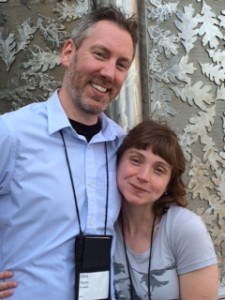
Chris Holm and Katrina Niidas Holm at Bouchercon before the drinking began
Oh, I see how it is. “Chris Holm is the new kid on the block,” my fellow bloggers must’ve said. “Let’s give him the short straw, and stick him with the Monday after Bouchercon.”
Bouchercon, for those who don’t know, is the World Mystery Convention. Think of it as Comic-Con for mystery geeks. It’s named after writer/editor/critic/noted champion of the genre Anthony Boucher, and often shortened to B’con, both for convenience and because no one can agree on how to pronounce “Boucher.” (Hint: it rhymes with “voucher.” I know because Wikipedia says so, and Wikipedia never lies.)
Bouchercon moves around from year to year. My first, in 2011, was in St. Louis. Last year’s was in Long Beach. This year’s is—er, I mean was—in Raleigh.
(Okay, you got me. I’m writing this ahead of time. I know myself too well to put it off. After four days of drinking into the wee hours with several hotels’ worth of fellow crime writers, there’s no way I’m going to have the brainpower left come Sunday night to write a recap post. But that’s okay. I write fiction for a living. I’ll just make something up.)
It was lovely to see MCW’s own Kathy Lynn Emerson this weekend, although I confess I was surprised when she ordered a round of flaming shots for the entire bar. My karaoke outing with Dorothy Cannell was as entertaining as it was eye-opening; who knew she had such a comprehensive knowledge of mid-90s West Coast hip hop? Kate Flora’s much-hyped arm-wrestling match with her Beat, Slay, Love co-author Gary Phillips was the hottest ticket in town… but I don’t want to spoil the result for those of you who haven’t seen the video yet. (Suffice to say there was crying. And cursing. And some minor structural damage. According to YouTube, it’s gotten over 100,000 hits so far.) And then there’s Brenda Buchanan. This was her first Bouchercon, and she certainly made the most of it… but now that the Camaro’s been fished out of the fountain, and the authorities paid off, all’s well. The less we speak of it, the better.
In all seriousness, Bouchercon is a wonderful event, and I highly recommend attending. Lord knows once my hangover abates, I’ll be eagerly awaiting the next one. By then, maybe there’ll be a newer new kid we can stick with the Monday morning post.
October 9, 2015
Weekend Update: October 10-11, 2015
 Next week at Maine Crime Writers there will be posts by Chris Holm (Monday), Lea Wait (Tuesday), Barb Ross (Wednesday), Susan Vaughan (Thursday) and John Clark (Friday).
Next week at Maine Crime Writers there will be posts by Chris Holm (Monday), Lea Wait (Tuesday), Barb Ross (Wednesday), Susan Vaughan (Thursday) and John Clark (Friday).
In the news department, here’s what’s happening with some of us who blog regularly at Maine Crime Writers:
Kaitlyn Dunnett/Kathy Lynn Emerson is at Bouchercon this weekend, but when she returns she’ll be drawing names to give away ARCs of The Scottie Barked at Midnight. See her post from October 8 for more details.
Kate Flora: A bunch of us are in Raleigh, North Carolina this weekend for Bouchercon 2015, which is a huge national mystery convention. I keep trying to get pictures of Chris Holm (he moves too fast), Dorothy Cannell (she is always surrounded by a crowd) and Kathy. We shall see if I succeed. Until then, here are some other pictures. Maybe I can also get a good picture of Dreyfus the Cadaver Dog. I know you’d like to see that.
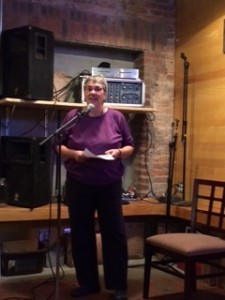
Brenda Buchanan reading from Cover Story at the People’s Reading

Kate’s Anthony-nominated book in the book room

Chris Holm and Katrina Niidas Holm at Bouchercon
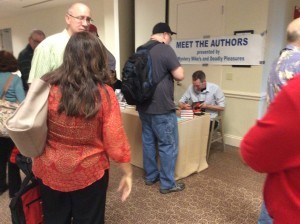
Chris signing The Killing Kind
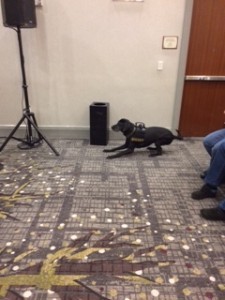
Dreyfus in a down position, indicating he’s found the body

Dreyfus the cadaver dog catching the scent
An invitation to readers of this blog: Do you have news relating to Maine, Crime, or Writing? We’d love to hear from you. Just comment below to share.
And a reminder: If your library, school, or organization is looking for a speaker, we are often available to talk about the writing process, research, where we get our ideas, and other mysteries of the business. Contact Kate Flora: mailto: kateflora@gmail.com
Lea Wait's Blog
- Lea Wait's profile
- 509 followers


